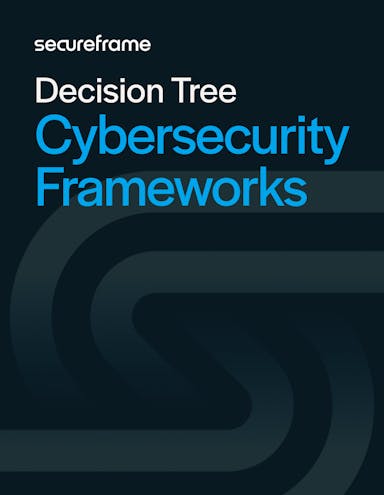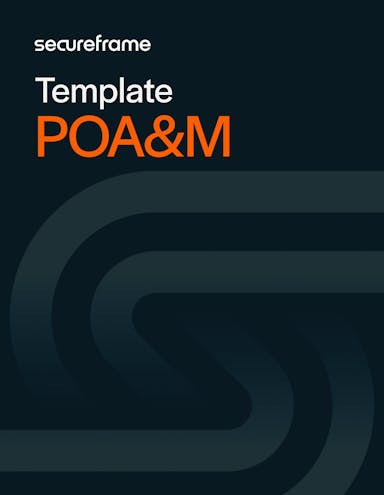
Cybersecurity Remediation: A Guide to Protecting Your Business
According to a survey conducted by Pentera, 60% of enterprises report a weekly minimum of 500 security events that require remediation.
While cyber threats are becoming increasingly prevalent and sophisticated, organizations are facing more resource constraints than ever before. In Pentera’s survey, 36% of organizations in 2024 reported a lack of internal resources for remediation— a significant leap from 21% in 2023. That means an effective cybersecurity remediation process has never been more critical to defending enterprises today against evolving threats and risks.
In this blog, we’ll explore what remediation is, why it’s important, what the process involves, and how automation can help improve efficiency.
What is remediation in cybersecurity?
Cybersecurity remediation refers to the process of identifying and mitigating vulnerabilities, threats, and/or issues that may expose a system to cyber attacks.
These vulnerabilities,threats, and issues may include:
- unpatched software
- weak passwords
- misconfigured settings
- default authentication
- insecure code
- unresolved incidents
These are just a few examples of gaps that may exist in a company's defenses. Remediation ensures that once a vulnerability or threat is detected, it is effectively resolved to prevent exploitation.
Let’s take a closer look at the critical role that remediation plays in a broader cybersecurity strategy.
Why is remediation important in cybersecurity?
Thousands of security vulnerabilities in computer software and systems are discovered and publicly disclosed every year. As of August 2024, internet users worldwide discovered 52,000 new common IT security vulnerabilities and exposures (CVEs). This is a huge spike from the 29,000 reported last year, which at the time was the highest reported annual figure.
Without remediation, discovered vulnerabilities remain unaddressed, leaving systems open to breaches, data theft, and other cyber incidents.
Remediation therefore plays a crucial role in cybersecurity by closing gaps before attackers have a chance to exploit them.
The remediation process can help minimize risks and potential damages, protect sensitive information from malicious actors, and ensure compliance with regulatory and industry standards like SOC 2, ISO 27001, CMMC, and many other frameworks.
Let’s take a closer look at the benefits of remediation below.

Cybersecurity frameworks decision tree
Use this series of questions to help select the best cybersecurity framework(s) based on your industry, data, and needs.
Benefits of cybersecurity remediation
Proactively addressing weaknesses through remediation provides several significant benefits:
- Reduce risk exposure: Proactively identifying and fixing vulnerabilities significantly minimizes the window of opportunity for cybercriminals to exploit weaknesses. By quickly addressing these issues, businesses reduce the likelihood of data breaches and other cyber incidents. This is huge considering that data breaches are getting more difficult to recover from, with the average recovery taking more than 100 days in 2024.
- Increase operational efficiency: When vulnerabilities are patched and systems are fortified against threats regularly, the likelihood of downtime due to security incidents decreases. This helps ensure that critical business functions—such as customer transactions, supply chain management, or internal communications—run smoothly, enhancing overall efficiency and business continuity.
- Free up resources for strategic growth: When vulnerabilities or threats are proactively addressed or quickly remediated, engineers as well as other company resources are freed up to focus on strategic growth capabilities and initiatives such as product enhancements.
- Meet compliance requirements: Many regulatory and industry standards, including but not limited to SOC 2, CMMC, PCI DSS, and HIPAA, require proof of remediation efforts. By implementing remediation processes and consistently addressing risks and vulnerabilities, businesses can demonstrate compliance with these regulations. This not only helps avoid fines and penalties — it also positions the organization as a trusted entity within highly regulated industries, where proof of remediation is often a core requirement.
- Unlock cost savings: The cost of a data breach can be astronomical, with the average reaching an all-time high of $4.88 million in 2024. Effective and proactive remediation can help avoid these costly incidents. Additionally, companies that maintain compliance through continuous monitoring and remediation avoid fines for non-compliance.
- Build trust: By actively remediating vulnerabilities and threats and showcasing these efforts, businesses demonstrate a strong commitment to data protection. This can help reassure clients, partners, and other stakeholders that their data is safe, fostering trust and stronger relationships.
Now that we understand the benefits of remediation, let’s walk through the process.
Recommended reading

A Step-by-Step Guide to the Vulnerability Management Process [+ Policy Template]
Cybersecurity remediation process
Effective cybersecurity remediation follows a structured process that includes several key steps. These are outlined below.

Step 1: Identification
The first step in cybersecurity remediation is identifying vulnerabilities and threats within your system. You can do so using various methods, such as vulnerability scanners, penetration tests, and internal and external audits. These tools and methods help pinpoint weaknesses, outdated software, misconfigurations, or other gaps in your security controls so you know what areas require attention and resources.
Step 2: Prioritization
Once vulnerabilities and threats are identified, it is essential to prioritize them based on several factors. These include the severity of the vulnerability or threat, the potential business impact if exploited, and the likelihood of it occurring.
Given the enormous number of vulnerabilities disclosed every year, prioritization is a key step. Not all vulnerabilities and threats necessarily pose risks that must be mitigated immediately. However, critical vulnerabilities and threats—such as those that allow unauthorized access or lead to data loss—should be addressed immediately.
This prioritization process ensures that resources are allocated effectively so that organizations aren’t wasting resources addressing lower-risk vulnerabilities while higher-risk vulnerabilities remain unaddressed.
Step 3: Resolution
The next step is to address and mitigate the most critical risks. This can involve:
- deploying patches to fix software bugs
- reconfiguring security settings to enhance protection
- updating systems
- implementing new security measures
- removing malware
- strengthening firewalls
- implementing advanced security tools
The goal is to either eliminate the vulnerability and threat completely or reduce its potential to be exploited to an acceptable level of risk.
Step 4: Validation and testing
Once remediation actions are taken, it is crucial to verify that these efforts have been effective. This involves retesting the system to ensure the vulnerabilities are no longer present and that the applied fixes work as intended. During this step, you may need to run additional scans, perform penetration tests, or review logs to confirm that the issues have been resolved.
Verification ensures that vulnerabilities and threats have been effectively addressed and that the remediation process has achieved its intended results.
Step 5: Documentation
Proper documentation is key to an effective cybersecurity remediation process. Maintaining detailed records of the vulnerabilities and threats identified, the remediation actions taken, and the outcomes is not only essential for compliance with frameworks like ISO 27001 and CMMC — it can also be incredibly valuable for internal audits and as a reference for future remediation efforts.
You can document your efforts in multiple ways. If pursuing compliance with a framework, it may specify how, like through a Plan of Action & Milestones (POA&M) if pursuing CMMC, FedRAMP, NIST 800-53, and/or NIST 800-171 compliance.

Plan of Action and Milestones (POA&M) Template
The POA&M is a strategic document used to identify and track the actions required to address gaps in your organization’s controls that were identified during an internal or third-party assessment. Use this template to demonstrate ongoing efforts to achieve and maintain compliance with multiple frameworks including CMMC.
Step 6: Continuous monitoring
Cybersecurity remediation is not a one-time effort or check-the-box exercise to be completed once a year. Continuous monitoring is essential to maintaining a secure environment as threats and technologies evolve and new vulnerabilities are discovered.
By implementing automated tools and processes to constantly monitor your IT environment, organizations can quickly detect new vulnerabilities and threats and respond promptly. This ongoing vigilance helps organizations identify and address vulnerabilities and potential threats before they can be exploited and prevent previously resolved issues from resurfacing.
By following this systematic approach, organizations can proactively address vulnerabilities and threats and strengthen the resilience of their systems against evolving threats.
Recommended reading

7 Benefits of Continuous Monitoring & How Automation Can Maximize Impact
Cybersecurity remediation best practices
Adopting the following best practices can help you streamline the remediation process and maintain a strong defense against cyber threats:
- Automate where possible: Resourcing is one of the top challenges that organizations face when trying to effectively manage vulnerabilities and threats. Using automated tools can help address this challenge, enabling faster detection, prioritization, and remediation. These tools may include vulnerability scanning tools, tracking and remediation tools, compliance automation tools, security tools, and more.
- Assign and track tasks and send notifications to enable team collaboration : Vulnerabilities and threats may require different responses from different teams, depending on whether the issue requires attention now and which assets are impacted. Assigning tasks and sending notifications can help ensure IT, security, and compliance teams as well as any other stakeholders understand their responsibilities and work together to remediate issues promptly.
- Prioritize vulnerabilities and threats based on multiple factors: For your remediation efforts to be as effective as possible, you want to focus on resolving critical vulnerabilities and threats first to reduce the most likely or severe risks. To do so, you need to evaluate and rank vulnerabilities and threats based on multiple factors such as severity, potential business impact, exploitability, asset information, threat intelligence, and compensating controls in order to have as much context as possible.
- Create consistent employee training within your own organization: Employees and personnel can be your most vulnerable asset. Often, data and security breaches happen through human error, so providing ongoing security awareness education can help reduce risk and contribute to a culture where everyone feels responsible for proactively identifying and addressing vulnerabilities and threats.
- Regularly review and update your remediation process: Cybersecurity is not a one-time task. Continuously evaluate and update remediation processes to align with evolving threats.
The role of automation in cybersecurity remediation
Relying solely on manual processes to remediate cybersecurity and compliance issues presents significant challenges. First, manual remediation is time-consuming and resource-intensive. Security teams often need to comb through vast amounts of data to identify vulnerabilities, determine the severity of threats, and assign priorities. This process can lead to delays, increasing the risk of a cyberattack exploiting an unresolved vulnerability.
Given that 75% of vulnerabilities were exploited within 19 days, or approximately three weeks, of publication in 2023, it is crucial that organizations prioritize and address critical vulnerabilities as quickly as possible.
Furthermore, manual efforts are prone to human error, with overlooked vulnerabilities or misconfigurations becoming costly blind spots. This is more likely now that organizations are challenged to keep pace with increasingly frequent and evolving cyber threats.
Automation can significantly improve efficiency and reduce response times in cybersecurity remediation. Automated tools enable continuous monitoring and real-time detection of vulnerabilities and issues, eliminating the need for lengthy manual scans. Automation also accelerates the prioritization and remediation process by providing security teams with actionable insights based on threat severity and business impact. This reduces the time between detection and resolution, minimizing the window of exposure. Additionally, automation reduces the risk of human error, ensuring consistent and reliable remediation efforts. Overall, automating remediation processes can enhance your organization’s security and compliance posture while freeing up resources for more strategic initiatives.
In Seemplicity’s 2024 Remediation Operations Report, 41% of respondents said they use automation to both identify the appropriate remediation team and implement remediation actions. As a result of automating remediation as well as other key stages of vulnerability management, 89% of surveyed cybersecurity professionals said automation has improved their efficiency. The top benefits cited were faster response to emerging threats (65%) and improved accuracy in identifying and addressing vulnerabilities (60%).
Recommended reading

5 Hardest Things About Security Compliance and How Technology Can Help
Why choose Secureframe to simplify cybersecurity remediation
Managing the cybersecurity remediation process can be complex and time-consuming. That’s where Secureframe comes in. Secureframe offers automated solutions that make it easier to detect, prioritize, and address vulnerabilities, risks, and compliance issues efficiently.
By integrating with your existing security stack, Secureframe simplifies the remediation process through:
- Automated tests: Secureframe ensures your security controls and remediation steps align with compliance frameworks like SOC 2 and the specific resources you are utilizing within your environment. For example, if you set up an integration with AWS, you’ll receive tests and remediation guidance related to security best practices against the resources you are using within your AWS account.
- AI-powered remediation: Over time, changes in your environment or organization may result in tests failing. Comply AI for Remediation automatically generates fixes as infrastructure-as-code, allowing users to effortlessly implement these solutions in their cloud environments. This not only makes the remediation process more efficient, it also can help enhance your organization’s security posture.
- Tasks and alerts: With Secureframe, owners of particular assets may receive alerts about detected misconfigurations directly in the platform or via Slack. Owners can also be assigned to certain tasks with due dates, and Secureframe will create corresponding tickets within your ticketing tool, such as Jira, ClickUp, Linear, and ServiceNow. When these tickets are completed, the tasks automatically resolve in Secureframe, and the linked ticket can also be found in the test in-platform, ensuring prompt resolution of misconfigurations so you avoid falling out of compliance.
- Customizable notifications: With Secureframe, you can set up notifications for required regular tasks that are key to your remediation process throughout the year, including vulnerability scanning and penetration testing. You can also set up reminders for personnel to complete security awareness training.
- Vulnerability scanning: Secureframe can integrate with your cloud platform and developer tools to see all of your vulnerabilities from services like AWS inspector and Github in one place.
- Centralized risk management: Our platform offers an end-to-end risk management solution that follows the ISO 27005 methodology to empower you to effectively assess risks within your environment, prioritize remediation efforts, and enhance your security posture. You can make informed mitigation decisions, document risk treatment plans to meet criteria for frameworks such as SOC 2, ISO 27001, PCI, and HIPAA, establish a risk register where you can continuously manage your risks throughout the year, and more.
- Asset inventory: Compiling and maintaining an inventory of assets manually in a spreadsheet is tedious and difficult to keep up-to-date. Secureframe can keep an up-to-date inventory of all your assets for improved visibility and monitoring.
- Expert support: Get guidance on Secureframe tests and answers to any questions you may have about your remediation efforts from our in-house team of compliance managers. They can offer advice based on your unique systems and business needs and help identify gaps in your system and controls and ways to address them to keep your entire security program running smoothly.
- Trusted partners: Get access to a partner network of trusted auditors, vulnerability scanners, and pen testing firms who can test the effectiveness of your organization’s controls, configuration standards, vulnerability scanning, risk management, and security awareness training.
Schedule a demo to see how Secureframe can simplify and streamline your remediation efforts so you can focus on what matters most—growing your business securely.
FAQs
What is the difference between remediation and mitigation?
Remediation and mitigation are both strategies used to address vulnerabilities, but they differ in their approach and outcome. Remediation refers to fully resolving a vulnerability, eliminating the root cause of the issue to ensure that the threat can no longer be exploited. This typically involves applying patches, reconfiguring systems, or updating security protocols to eliminate the risk entirely. On the other hand, mitigation focuses on reducing the risk associated with a vulnerability to an acceptable level. For example, mitigation measures could include tightening access controls or isolating a vulnerable system, which lowers the chances of exploitation but does not fix the underlying issue.
How often should remediation be done?
Remediation should be an ongoing effort, rather than a one-time task. Cyber threats are constantly evolving, and new vulnerabilities are discovered regularly. As a result, organizations must frequently review and update their security measures to stay ahead of potential risks. Remediation efforts should also be triggered whenever new vulnerabilities are identified, such as through external threat intelligence or after a security audit.
Can remediation be automated?
Yes, many aspects of remediation can and should be automated since manual processes are slow and error-prone. Automated tools can continuously scan for vulnerabilities, automatically deploy patches, and track the status of remediation efforts in real time. By automating these processes, organizations can reduce the time it takes to remediate vulnerabilities, minimize human error, and maintain a proactive approach to cybersecurity.
Why is prioritization important in remediation?
Prioritization is essential in the remediation process because not all vulnerabilities and threats carry the same level of risk. Those that can be easily exploited or affect critical systems require immediate attention, while lower-risk vulnerabilities and threats can be addressed over time. Without effective prioritization, security teams may spend valuable resources and time fixing less urgent issues, leaving more dangerous vulnerabilities exposed.